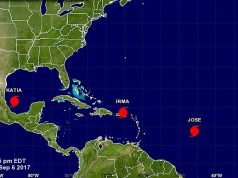After 9 years and 3 billion miles, we finally meet our far-flung cosmic cousin, Pluto! Let’s rewrite that: A spacecraft, New Horizons, was launched in 2006 and has travelled 3 billion miles or 4,828,032 Km in the past nine years. That’s about roughly 32 trips to the sun. It’s not stopping at Pluto, but it flew past the dwarf planet at 7.49 a.m. ET Tuesday.
It was reported that New Horizons will be traveling at about 36,000 mph during its closest approach, which will bring it about 7,800 miles from the dwarf planet’s surface, closer than any human-made spacecraft has ever been to the cosmic body. We can’t wait to see what scientist will find.
According to NASA:
This stunning image of the dwarf planet was captured from New Horizons at about 4 p.m. EDT on July 13, about 16 hours before the moment of closest approach. The spacecraft was 476,000 miles (766,000 kilometers) from the surface.

This second, the real New Horizons spacecraft (not the illustration above) is propelling thousands of miles per hour through space!
“It’s almost unbelievable that after all these years of hard work, our little piano-size robot is finally getting to show us Pluto.” the team said at a press conference this morning.
Look how small Pluto is compared to Earth! The smaller round object is Charon, Pluto’s largest moon. New measurements completed by New Horizons confirmed Pluto’s small stature — its diameter is just 18.5% that of Earth’s.

A better glimpse at Pluto helps us understand our own home here on planet Earth.
For one, there’s Pluto’s unique atmosphere. It’s escaping into space! And nothing like that is happening anywhere else in our solar system. But scientists think it used to happen here on Earth, too, when our atmosphere was hydrogen-helium (a long, long time ago). By studying Pluto, the team at New Horizons is hoping to better understand the evolution of our own atmosphere.
New Horizons may teach us more about comets, too. Pluto is in the Kuiper Belt — the outermost region of our solar system. This frigid “third zone” is where tons of cometary impactors come from, including — quite possibly — the one that wiped out the dinosaurs!Documenting the sizes of craters on Pluto and its moons may provide helpful context about comets and how they affect the planets around us.










